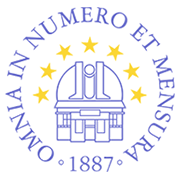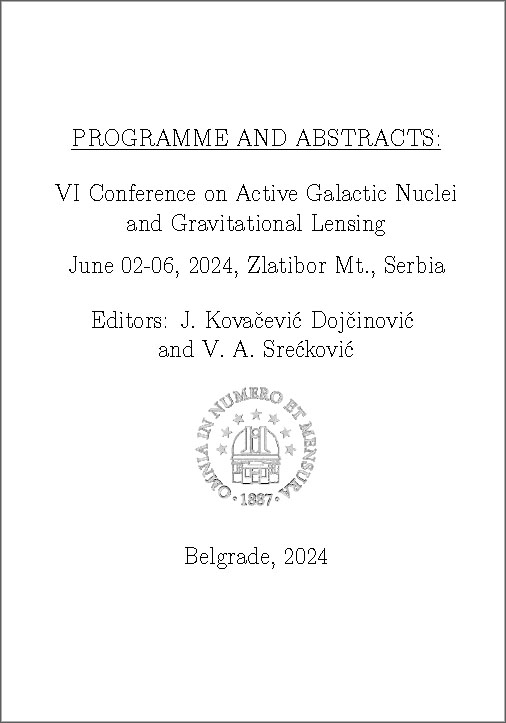Publication
PROGRAMME AND ABSTRACTS: VI Conference on Active Galactic
Nuclei and Gravitational Lensing, June 02-06, 2024, Zlatibor Mt.,
Serbia. Editors: J. Kovačević Dojčinović and V. A. Srećković
Nuclei and Gravitational Lensing, June 02-06, 2024, Zlatibor Mt.,
Serbia. Editors: J. Kovačević Dojčinović and V. A. Srećković
Autors
Title
ELECTRON IONIZATION CROSS SECTIONS FOR IRON IONS - REPRESENTATION IN DATA BASES
Abstract
Chemical abundances in active galaxies has been recently studied by Flury and Moran (2020). The Seyfert 2 galaxy NGC 6552 shows a reflected X-ray spectrum with strong Kα lines of many neutral atoms from O, Ne, Mg till Fe and Ni (Reynolds et al. 1994). Since iron is the most abundant of the heavier elements in the Universe, the study of its Kα profiles is a powerful tool for investigating the innermost regions of AGN. These profiles show characteristic double-horn structure influenced by gravitational and Doppler effects (Middei, 2018). The formation of the H-like iron (Fe XXVI) Lyα line at 6.97 keV in the framework of current models for accretion into a black hole have been studied by Bautista and Titarchuk (1999).
Iron Project (Hummer et al. 1993) has provided a vast amount of computed data on electron excitation cross sections and rates of astrophysical importance, together with radiative transition probabilities and photoionization cross sections mainly for ions of the iron-group elements. Within the scope of that project electron excitation of the fine-structure transitions in hydrogen-like ions He II and Fe XXVI had been determined (Kisielius et al. 1996). Experimental electronimpact ionization cross sections have been obtained by measuring the equilibrium ionization balance from X-ray measurements of radiative recombination into the K-shell of hydrogen-like and bare iron ions within an electron beam ion trap (O’Rourke et al. 2001). Existing electron-impact ionization cross sections have been reviewed recently by Kynien˙e et al. (2019) together with the presentation of the new set of data for Fe IX ion. Some of these cross sections may be found in BEAM data base (Marinković et al. 2017) as well as in several other AMO data bases what will be discussed during the presentation.
Iron Project (Hummer et al. 1993) has provided a vast amount of computed data on electron excitation cross sections and rates of astrophysical importance, together with radiative transition probabilities and photoionization cross sections mainly for ions of the iron-group elements. Within the scope of that project electron excitation of the fine-structure transitions in hydrogen-like ions He II and Fe XXVI had been determined (Kisielius et al. 1996). Experimental electronimpact ionization cross sections have been obtained by measuring the equilibrium ionization balance from X-ray measurements of radiative recombination into the K-shell of hydrogen-like and bare iron ions within an electron beam ion trap (O’Rourke et al. 2001). Existing electron-impact ionization cross sections have been reviewed recently by Kynien˙e et al. (2019) together with the presentation of the new set of data for Fe IX ion. Some of these cross sections may be found in BEAM data base (Marinković et al. 2017) as well as in several other AMO data bases what will be discussed during the presentation.




